The Omoda 9, launched in the UK in the summer of 2025, is the flagship plug-in hybrid SUV from Omoda, a sub-brand of Chinese automaker Chery. Priced at approximately £44,990, it aims to deliver a premium SUV experience at a cost comparable to mainstream rivals like the Skoda Kodiaq and Hyundai Tucson, while challenging luxury brands such as Volvo XC60 and Audi Q5. With a class-leading 93-mile electric range, 443bhp, and a tech-laden interior, the Omoda 9 promises “premium affordability.”
But does it live up to the hype in the competitive UK market? alongside UK-specific sources, explores its design, performance, interior, practicality, and value proposition to determine if it’s a worthy contender.
Overview of the Omoda 9
The Omoda 9 is a D-segment plug-in hybrid (PHEV) SUV, measuring 4.77m long, 1.92m wide, and 1.67m tall, with a 2.8m wheelbase. It’s positioned as Omoda’s flagship model, sitting above the Omoda 5 and 7, and is known as the Exeed Yaoguang or RX in other markets. Key highlights include:
- Powertrain: Super Hybrid System (SHS) with a 1.5L turbo petrol engine, dual electric motors, and a 34.5kWh battery, delivering 443bhp and 516lb ft of torque.
- Electric Range: 93 miles (WLTP), the longest among PHEVs in its class.
- Price: £44,990 (single trim, fully loaded, with paint as the only optional extra).
- Features: 24.6-inch dual screens, heated/ventilated seats (front and rear), Sony sound system, panoramic sunroof, and advanced driver assistance systems (ADAS).
- Warranty: 7 years/100,000 miles, with an 8-year battery warranty.
The Australian review describes it as a “cheap Chinese luxury car” with 395kW (equivalent to 529bhp in Australia’s metric), but UK specs align at 443bhp. Its bold strategy is to undercut premium rivals while offering more equipment, but brand perception and refinement remain hurdles. Let’s break down its performance in the UK context.
Exterior Design: Premium Looks with a Familiar Feel
The Omoda 9’s exterior blends modern aesthetics with cues inspired by premium brands, creating a sleek yet derivative design. Key features include:
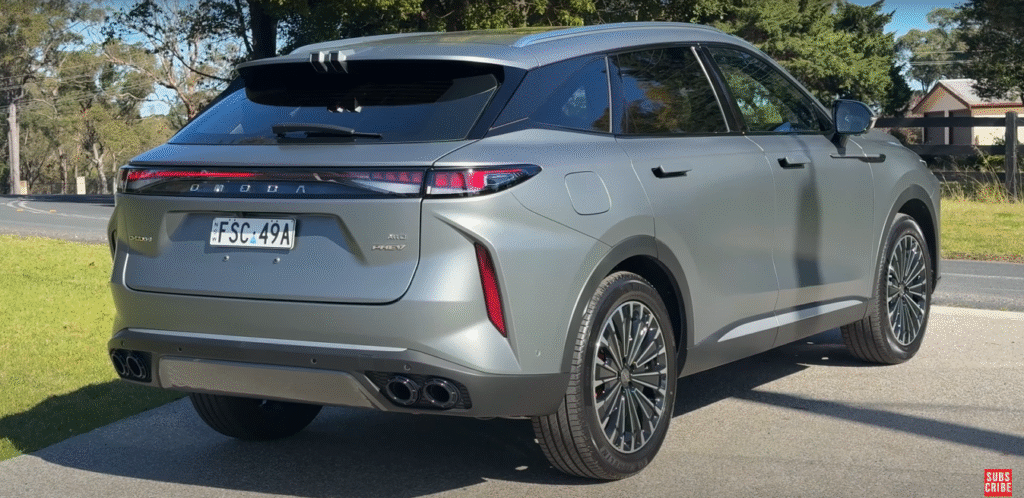
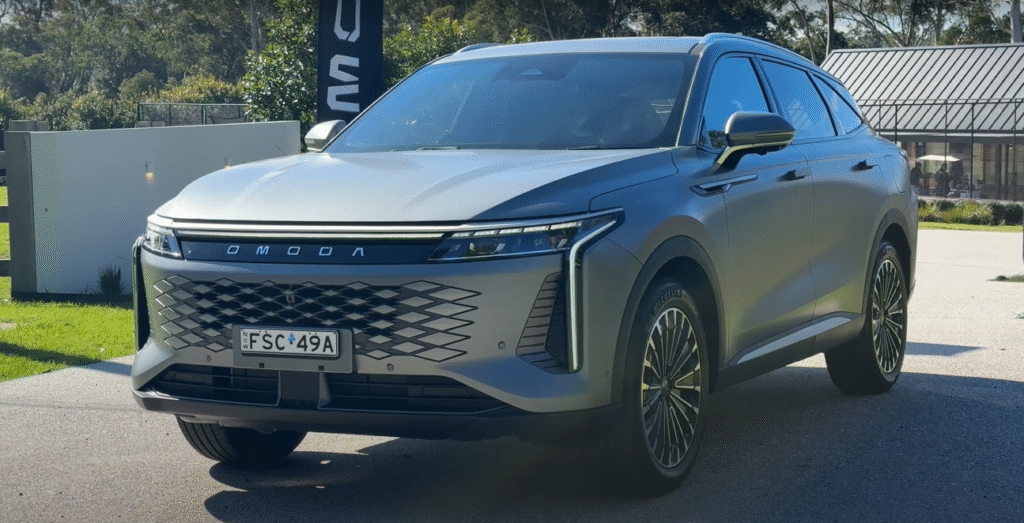
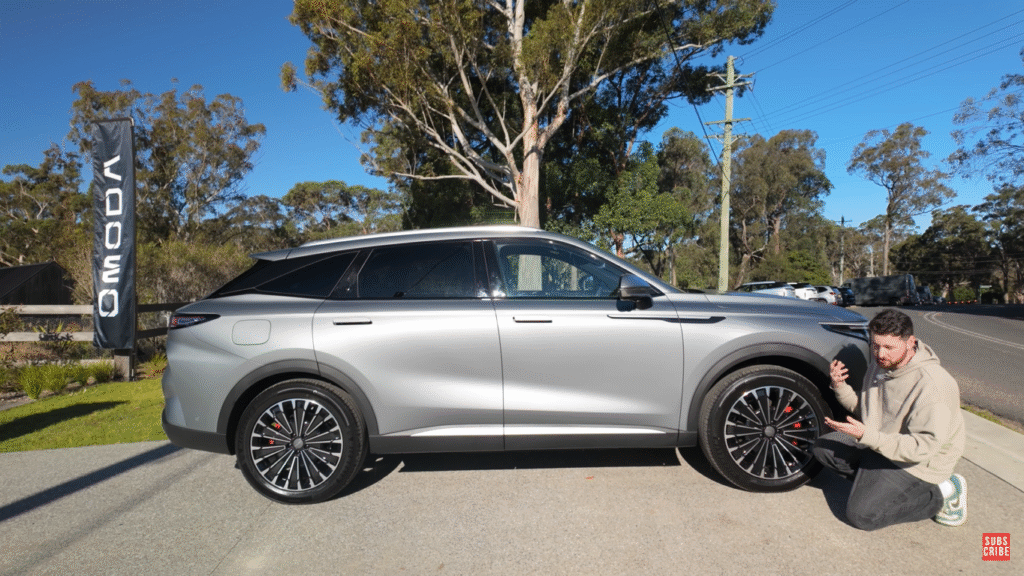
- Front: Full-width LED light bar with premium vision LEDs and a diamond-patterned grille, reminiscent of Lexus or Range Rover Velar. The Australian reviewer praises its “Audiesque” lighting animations.
- Side: 20-inch alloy wheels with Michelin Primacy tires, pop-out door handles, and a 0.3 drag coefficient for efficiency. Its size is slightly smaller than a Hyundai Santa Fe.
- Rear: LED light bar with animations, subtle badging, and fake quad exhausts, which the reviewer notes as a minor letdown.
UK Perspective: UK reviews (e.g., Autocar, The Car Expert) describe the design as “smart but inoffensive” and “Lexus-like” from certain angles, though some find it “derivative” or “boring.” The 600mm wading depth and 200mm ground clearance suggest decent off-road capability, but its 1500kg towing capacity is modest compared to rivals like the Skoda Kodiaq.
Verdict: The Omoda 9’s styling is handsome and premium-leaning, appealing to UK buyers seeking a modern SUV look without overt flashiness. However, its derivative design may not stand out against established rivals.
Interior: Tech-Laden but Not Flawless
The Omoda 9’s interior aims for luxury with a focus on technology and comfort, drawing heavily from premium inspirations like Mercedes-Benz. Key highlights include:
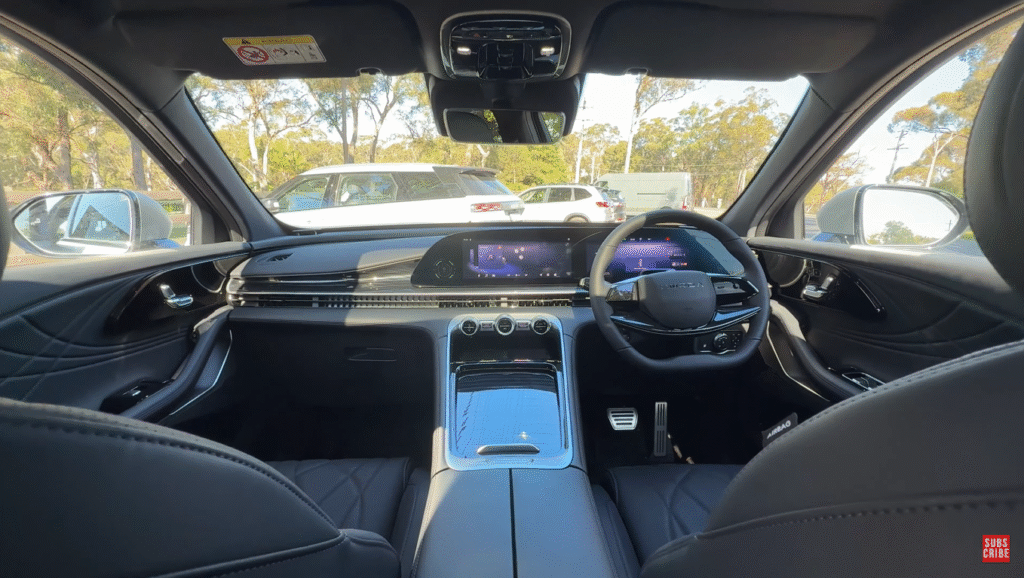
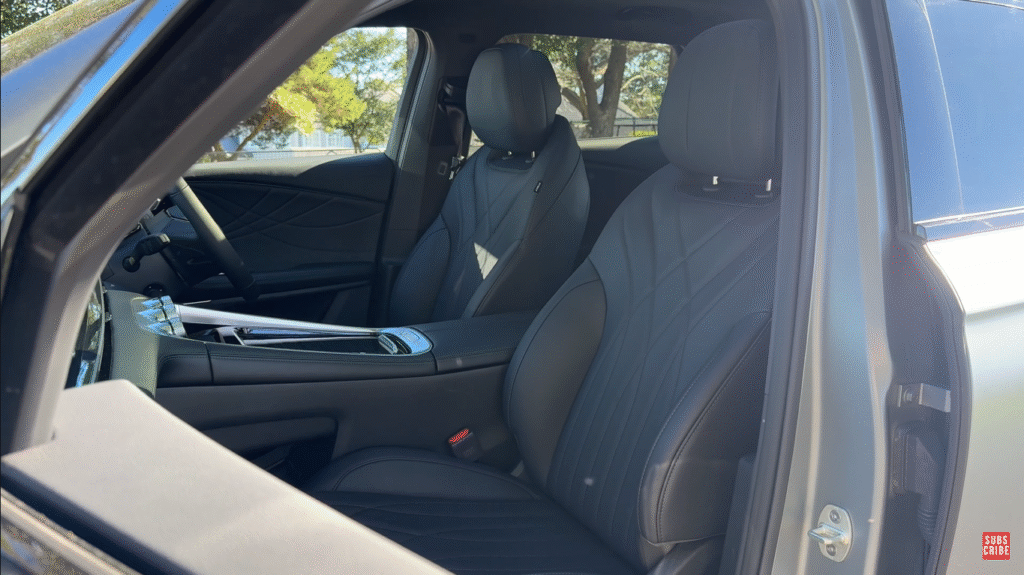
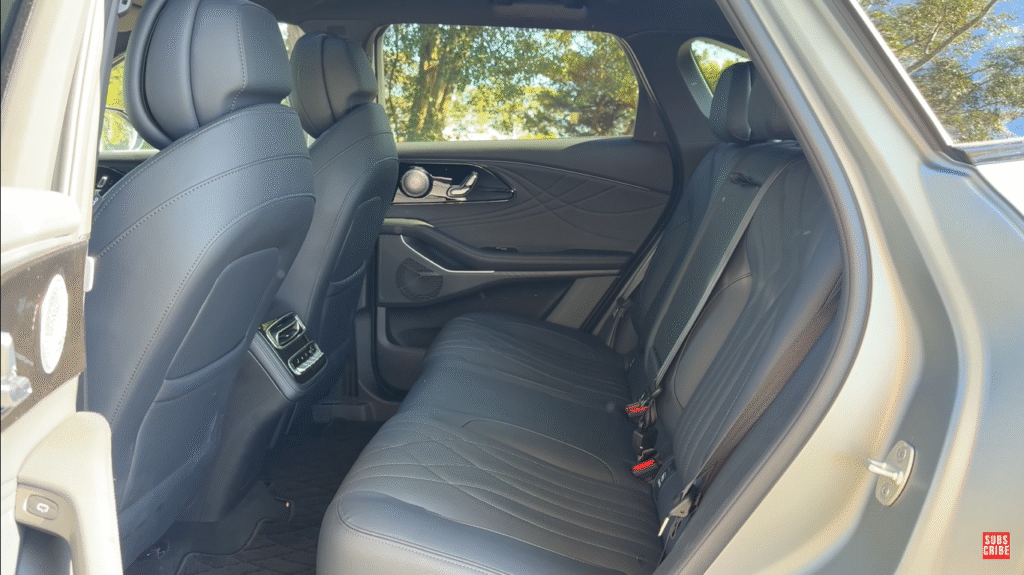
- Dashboard: A 24.6-inch curved dual-screen setup (12.3-inch driver display and 12.3-inch infotainment) with wireless Apple CarPlay and Android Auto. UK reviews praise the crisp graphics but criticize the “confusing” menu layout and small fonts.
- Materials: Soft-touch leather seats (heated/ventilated front and rear), faux wood trim, and physical climate controls. However, some plastics (e.g., door cards, lower dash) feel “stiff” or “brittle” compared to premium rivals like Audi or BMW.
- Features: 14-speaker Sony sound system with headrest speakers, panoramic sunroof, fragrance system (with amusing names like “Cure”), built-in dash cam, and heads-up display. The Australian reviewer highlights the “disco mode” ambient lighting and push-button door releases.
- Ergonomics: The steering wheel uses tactile mechanical buttons, but limited adjustment and narrow front seats may discomfort taller drivers. The Australian reviewer (5’11”) notes thigh support issues, echoed by UK reviews citing a “cocooned” driving position.
Rear Seats: The back seats are a highlight, offering power-reclining outboard seats (heated/ventilated), ample legroom, and B-pillar air vents. However, the middle seat lacks features, and the 60/40 split rear seats are less versatile than rivals like the Skoda Kodiaq.
Verdict: The Omoda 9’s interior feels luxurious for its price, with generous tech and comfort features. However, material quality and ergonomic quirks (e.g., limited seat/steering adjustability) prevent it from matching premium German rivals.
Performance and Driving Experience
The Omoda 9’s Super Hybrid System (SHS) is its standout feature, combining a 1.5L turbo petrol engine, dual electric motors, and a 34.5kWh battery for seamless performance. Key points include:
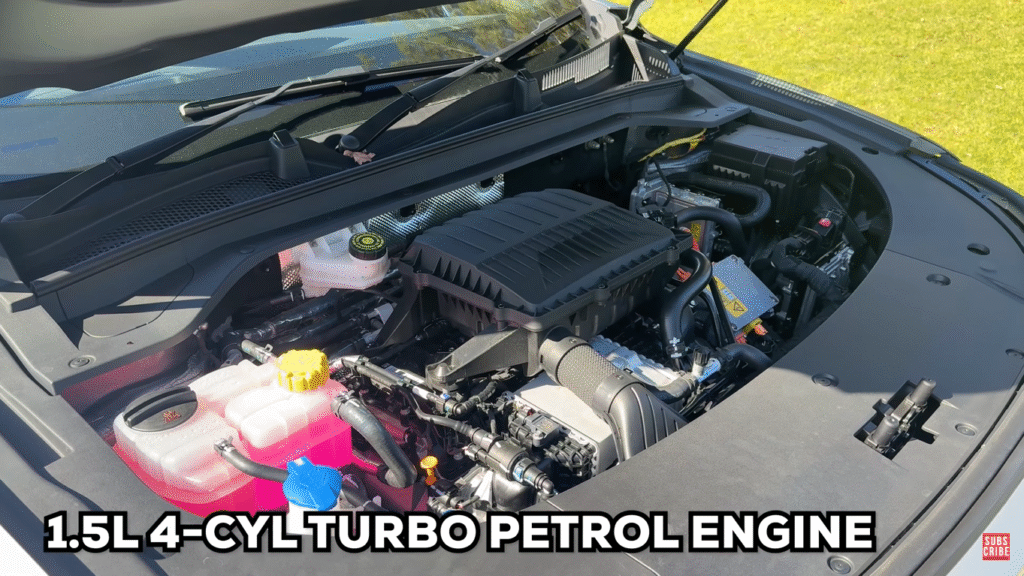
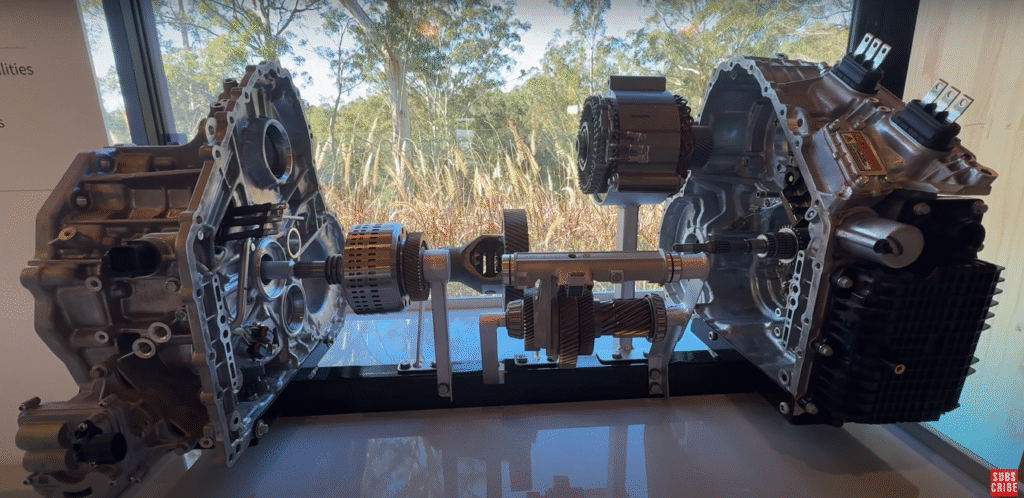
- Powertrain: Delivers 443bhp and 516lb ft, with a 0-62mph sprint of 4.9 seconds (124mph top speed). The Australian review notes 395kW (529bhp) due to metric differences, but confirms the power feels “wickedly quick” even at 15% battery. UK tests verify smooth transitions between electric and hybrid modes, with the petrol engine acting as a generator or direct drive.
- Electric Range: 93 miles (WLTP), far surpassing rivals like the Toyota RAV4 PHEV (46 miles). Real-world range is estimated at 75–80 miles, ideal for daily EV commuting. The 70kW DC fast charging (30–80% in 25 minutes) is a bonus.
- Driving Modes: Nine modes (Eco, Normal, Sport, Snow, Sand, etc.) with a rotary dial. The Australian reviewer notes an intrusive voice announcing mode changes, which UK reviews also find “annoying.”
- Handling: Comfort-focused with soft suspension and light steering, but UK reviews criticize “floaty handling” and “body lean” on twisty roads. The adaptive dampers firm up under braking/acceleration, but low-speed ride quality is “fidgety” on uneven UK roads.
- Braking: UK reviews note “grabby” brakes unless set to softer response, and regenerative braking settings lack differentiation.
UK Perspective: The Omoda 9 excels as a refined cruiser for motorways, with quiet EV mode and seamless hybrid transitions. However, its “forgettable” dynamics and vague steering disappoint on B-roads, making it less engaging than a Kia Sportage or Cupra Terramar.
Verdict: The Omoda 9’s powertrain is a highlight, offering impressive performance and efficiency for a PHEV. However, its comfort-oriented chassis and light steering limit dynamic appeal, best suiting relaxed UK drivers.
Practicality and Boot Space
The Omoda 9 is a five-seater SUV with no seven-seat option (unlike the upcoming Omoda 7). Practicality highlights include:
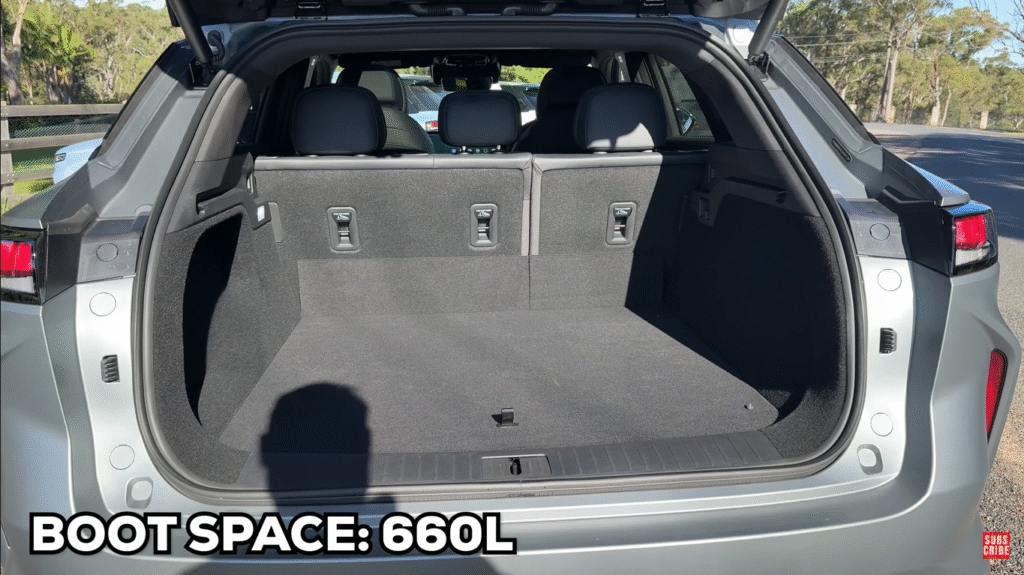
- Boot Space: 660 litres (seats up), expanding to 1,783 litres (seats down). This is competitive but shallower than the Skoda Kodiaq’s, with minimal underfloor storage due to hybrid components.
- Rear Space: Generous legroom and headroom, enhanced by a panoramic sunroof and reclining seats. The Australian reviewer praises the rear seats’ comfort over the front, a sentiment echoed in UK reviews.
- Storage: Felt-lined centre console, removable cup holders, and hidden compartments. Rear passengers get USB-A/C ports and map pockets, but the middle seat lacks amenities.
Verdict: The Omoda 9 offers ample space for families, with a practical boot and luxurious rear seating. However, its fixed rear seats and limited underfloor storage trail more versatile rivals.
Running Costs and Efficiency
The Omoda 9’s efficiency is a strong selling point for UK buyers, particularly company car drivers:
- Fuel Economy: Official 201.8mpg (WLTP with full charge), dropping to 43.6mpg over a full cycle. Real-world estimates suggest 40–50mpg without charging.
- CO2 Emissions: 38g/km, qualifying for a low 5% Benefit-in-Kind (BiK) tax rate, making it attractive for business users.
- Insurance: High group 47 rating may lead to costly premiums, a drawback noted in UK reviews.
- Charging: The 34.5kWh battery supports 70kW DC fast charging, a rarity for PHEVs in this price range.
- Warranty: 7 years/100,000 miles (8 years for the battery), offering peace of mind.
Verdict: The Omoda 9’s long electric range and low BiK tax make it cost-effective for company car users and those with home charging. However, high insurance costs could offset savings.
Safety and Reliability
- Safety: Euro NCAP awarded a 5-star rating in July 2025, with 90% adult protection, 85% child protection, and 80% safety assist scores. However, UK reviewers criticize “overly intrusive” driver assistance systems, though OTA updates may address this.
- Reliability: No data yet, but Chery’s reputation and the 7-year warranty suggest confidence.
Verdict: The Omoda 9 is safe and likely reliable, but intrusive ADAS may frustrate until updated.
Comparison Table: Omoda 9 vs. Rivals
| Feature | Omoda 9 | Skoda Kodiaq PHEV | Volvo XC60 PHEV | Kia Sportage PHEV |
|---|---|---|---|---|
| Price | £44,990 | £45,000–£50,000 | £55,250+ | £40,000–£45,000 |
| Power | 443bhp | 204bhp | 350bhp | 261bhp |
| Electric Range | 93 miles | 62 miles | 50 miles | 43 miles |
| Boot Space | 660L | 745L | 468L | 587L |
| Warranty | 7 years | 3 years | 3 years | 7 years |
Verdict: The Omoda 9 offers unmatched electric range and power for the price, but its boot space and handling lag behind the Kodiaq and Sportage.
Should You Buy the Omoda 9 in the UK?
The Omoda 9 is a compelling option for UK buyers seeking a tech-packed, efficient SUV at a competitive price. Its strengths include:
- Pros: Class-leading 93-mile electric range, powerful 443bhp hybrid, generous standard equipment, low BiK tax, and a strong warranty.
- Cons: Derivative styling, fidgety low-speed ride, vague steering, high insurance costs, and unproven brand reputation.
Buy If: You want a cost-effective PHEV with premium features, long electric range, and prioritize comfort over dynamic driving. Ideal for company car drivers or families with access to home charging. Avoid If: You value brand prestige, engaging handling, or versatile boot space, as rivals like the Skoda Kodiaq or Kia Sportage may better suit your needs.
Expert Tip: Test drive to ensure the ergonomics (e.g., seat comfort, steering adjustment) suit you, and budget for a high-quality case to protect the interior’s less durable plastics.
Yes, WLTP tests confirm 93 miles, with real-world estimates of 75–80 miles, ideal for daily commuting with home charging.
It undercuts the XC60 by £10,000, offers more power and electric range, but lacks the Volvo’s brand cachet and refined handling.
The Omoda 9 is a bold entry into the UK’s D-segment SUV market, offering an impressive blend of power, efficiency, and technology at a price that undercuts premium brands. Its 93-mile electric range, 443bhp hybrid powertrain, and fully loaded spec sheet make it a strong value proposition, particularly for company car drivers or families prioritizing comfort and low running costs. However, its derivative styling, unrefined low-speed ride, and unproven brand may deter buyers loyal to established names like Volvo or Audi. For those willing to overlook brand snobbery, the Omoda 9 is a practical, tech-laden choice that delivers more than expected for £44,990. Check it out at Omoda UK dealers or share your thoughts on X.
Author Section: CarSauce (Formerly Matt Brand Cars) – Automotive content,t especially around in-depth new and used car reviews, car comparisons, as well as engine and exhaust sounds. Subscribe now!
- Facebookfacebook.com/CarSauceOfficial
- Twittertwitter.com/CarSauceAU
- Instagraminstagram.com/carsauce_official



